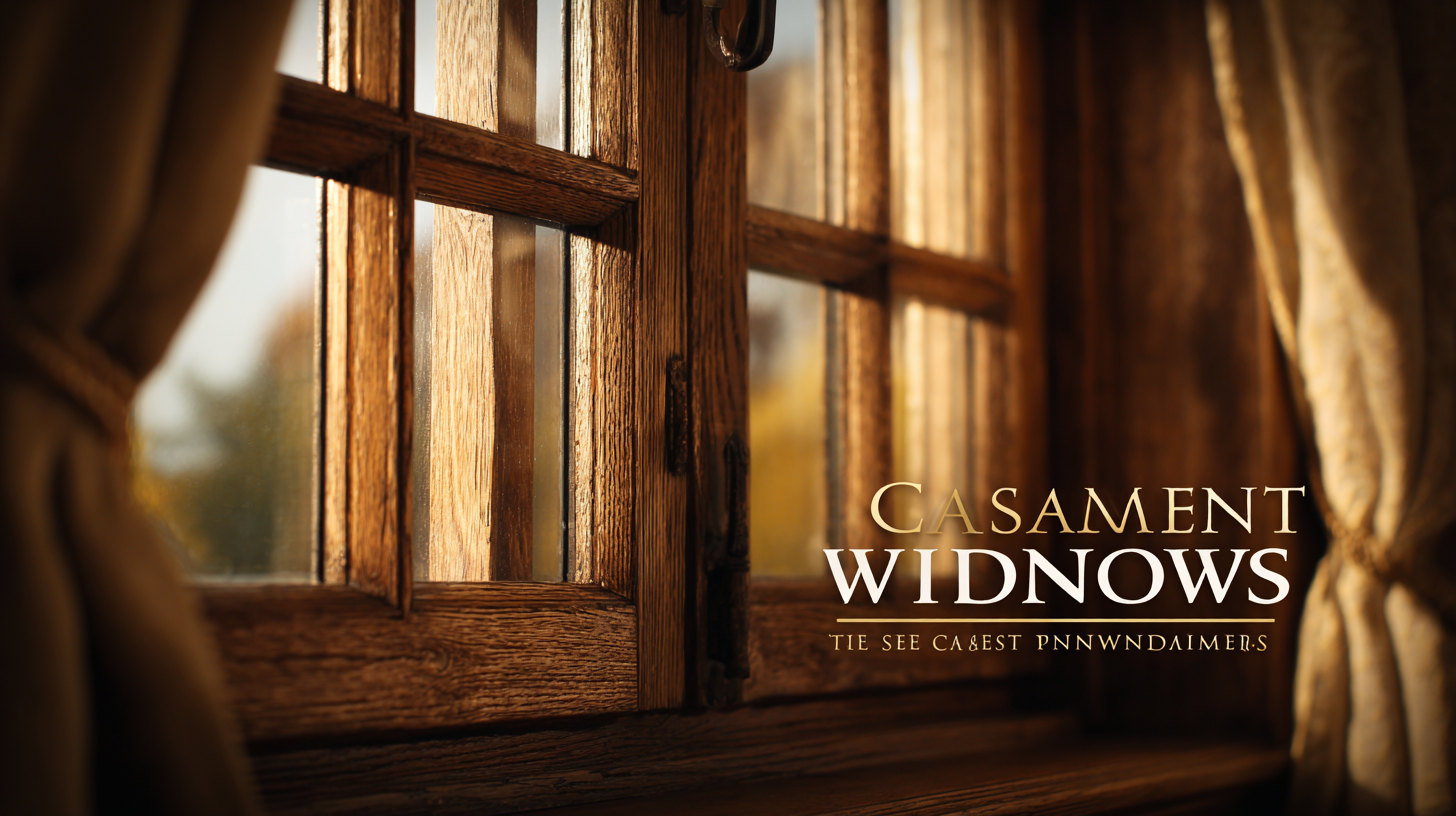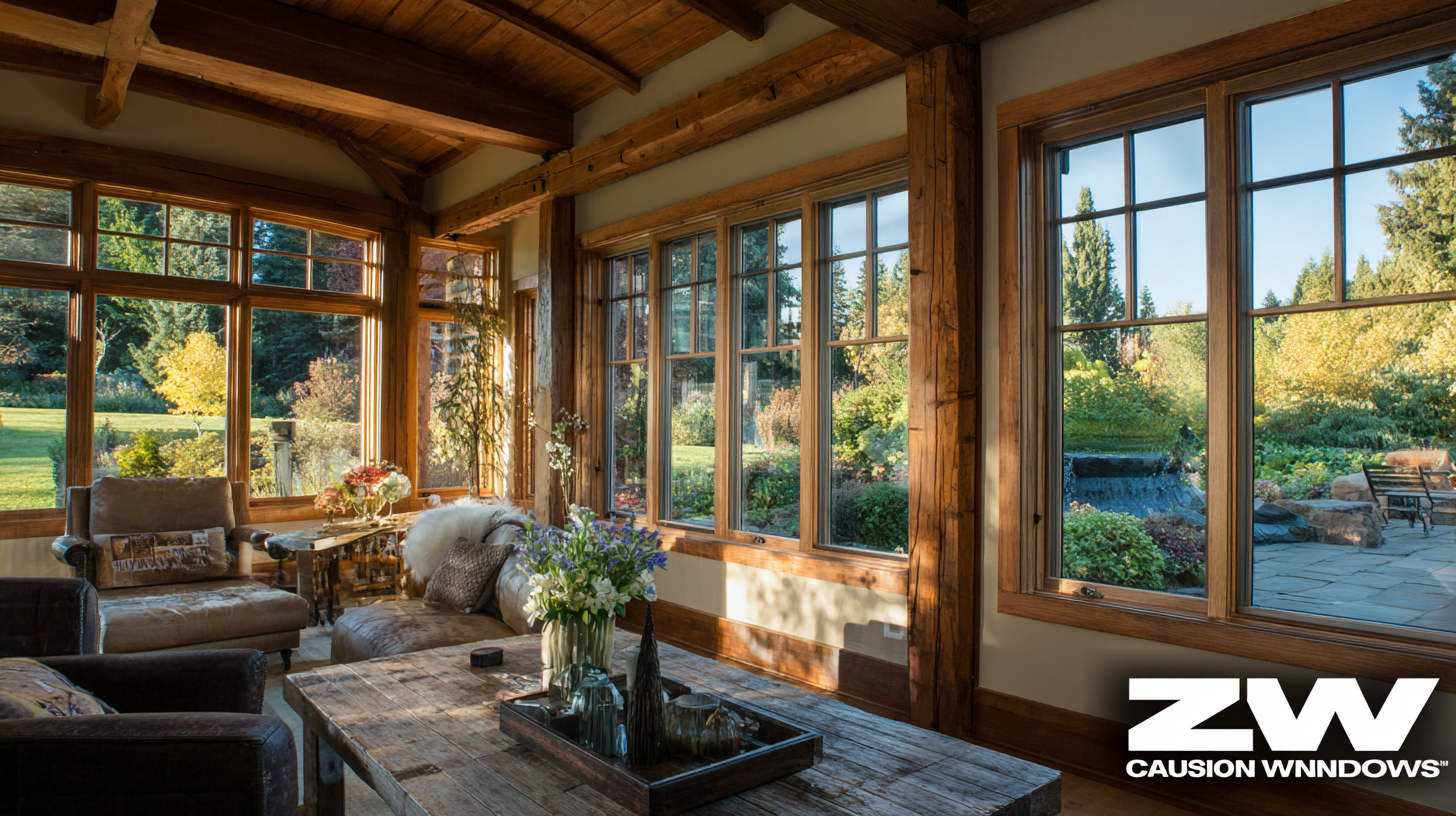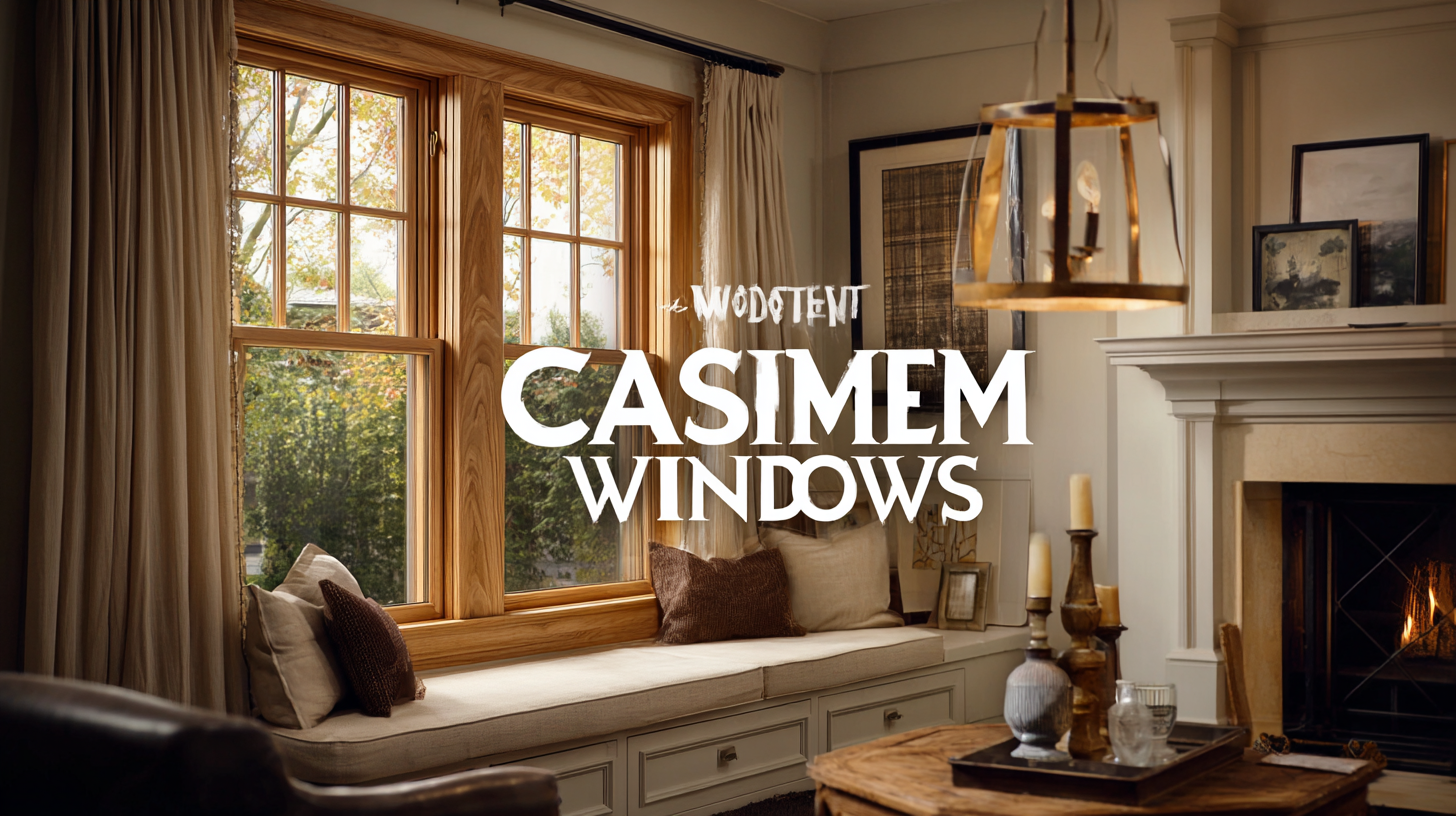When it comes to selecting the ideal materials for your construction projects, “Wood Casement Windows” stand out as a popular choice due to their blend of aesthetic appeal and functional benefits. Recent industry reports indicate that wood windows, particularly casement types, have seen a resurgence in demand, attributed to their energy efficiency and versatility in design. According to the Window and Door Manufacturers Association, more than 30% of homeowners prefer wood windows for new builds and renovations, citing durability and thermal performance as key factors. Casement windows, hinged at the side and opening outward, offer unparalleled ventilation and are known for their ability to create a seamless view of the outdoors. As you embark on your project, understanding the options and benefits of wood casement windows will not only enhance the beauty of your space but also elevate its value.

Wood casement windows are a popular choice for both residential and commercial projects, thanks to their unique blend of aesthetic appeal and functionality. One of the standout benefits of wood casement windows is their ability to provide excellent ventilation. When opened, the hinged design allows for a full-flow of air, making them ideal for spaces that require fresh air circulation. This feature not only enhances comfort but also helps improve indoor air quality.
In addition to their practical advantages, wood casement windows add a timeless elegance to any structure. Their natural warmth and beauty can elevate the architectural style of a home, creating a harmonious blend of indoor and outdoor spaces. Furthermore, wood is a sustainable material that, when sourced responsibly, can be an eco-friendly choice. With proper maintenance, wood casement windows can last for decades, offering long-term value and durability while maintaining their charming appearance. This makes them an excellent investment for those looking to enhance their property’s appeal and performance.
When selecting wood casement windows for your projects, it's crucial to weigh the alternatives available, such as vinyl, aluminum, and fiberglass options. Each material brings its own set of benefits, impacting both aesthetics and functionality. Vinyl windows are known for their excellent energy efficiency and low maintenance, making them a popular choice for homeowners looking for durability and a variety of color options. However, they may not always provide the classic look that wood windows offer.
Aluminum windows, on the other hand, charm with their sleek design and strength. They resist corrosion and are highly customizable, which is perfect for modern architectural projects. Nevertheless, it's essential to consider insulation capabilities, as aluminum can conduct heat and cold more than other materials. It’s crucial to use thermal breaks in the frames to enhance energy efficiency.
Fiberglass windows combine the best of both worlds, providing incredible strength without compromising insulation. They can mimic the look of wood, offering a stylish alternative that holds up well over time. When choosing between these materials, assess your project's specific needs, including climate, design preferences, and budget constraints. Remember, investing in high-quality windows will pay off in the long run with better performance and reduced maintenance.

When it comes to selecting wood casement windows, understanding the style and aesthetics associated with different window types can significantly impact the overall look of your project. Wood casement windows are renowned for their versatility, offering a classic appeal that can complement various architectural designs. According to the 2022 Window & Door Market Forecast, approximately 38% of homeowners prefer wood windows for their aesthetic quality, driven by the natural warmth and texture that wood can provide. This statistic underscores the importance of aesthetics in window selection, particularly in projects aimed at enhancing curb appeal.
Furthermore, it's important to consider how different window styles can influence the ambiance of interior spaces. Wood casement windows, with their operable design allowing for optimal ventilation, create a seamless connection between indoor and outdoor environments. Research from the American Architectural Manufacturers Association (AAMA) reveals that homes with well-placed windows can achieve energy efficiency ratings up to 35% higher than those without. The combination of style and functionality makes wood casement windows not only a visually appealing choice but also a practical one, proving essential in creating spaces that are both beautiful and energy-efficient.
When budgeting for wood casement windows, it's essential to consider various cost factors that can significantly impact your project's overall expenses. According to the National Association of Home Builders, wood windows can average between $350 to $1,000 per unit, depending on factors such as size, finish, and glass type. In comparison, vinyl windows typically range from $200 to $600, making them a more cost-effective alternative. However, while initial costs of wood casement windows may be higher, their longevity and aesthetic appeal can offer value that steel and vinyl options often cannot match.
In addition to upfront costs, ongoing maintenance should also be a consideration. Wood windows require regular painting or staining to protect them from weathering, which can add to long-term expenses. Industry studies estimate that homeowners may spend an additional 10-15% on maintenance over the lifespan of their wood casement windows. Conversely, alternatives like fiberglass or vinyl windows demand less maintenance, though they might not offer the same insulation properties or architectural charm. Therefore, weighing initial purchase costs against long-term maintenance expenses is crucial in making the best informed decision for your project.

When considering the best wood casement windows for your projects, it’s essential to take
maintenance into account. Wood windows offer an aesthetic appeal that’s hard to beat, but they require more attention compared to other materials.
Regular painting, sealing, and inspection for rot and insects are crucial to ensure longevity. Utilizing high-quality finishes can protect the wood from the elements,
but remember that periodic maintenance is still necessary to keep them looking fresh and functioning well.
In contrast,
vinyl and fiberglass windows demand significantly less upkeep. While they might lack the traditional charm of wood, they are resistant to fading, warping, and peeling.
A simple wash with soap and water often suffices for maintenance. For homeowners looking for a low-maintenance option, these materials could be more appealing. Ultimately,
the choice between wood and other materials depends on aesthetic preferences and how much time and effort one is willing to invest in upkeep.
Choosing wisely will lead to windows that not only enhance your building’s beauty but also stand the test of time.




